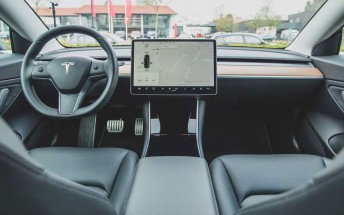Flashback: the Motorola Backflip and its crazy inside-out design

We miss old Motorola sometimes – it created some of the best phones of their day, but also crafted devices that had us asking “It does WHAT?” and staring in confusion. We’ve already covered the RAZR, the Moto X, the Nexus 6 and, of course, the Droid (aka Milestone) with its nifty slide-out QWERTY keyboard.
If it wasn’t clear, those were the excellent models. But today we wanted to talk about one of the crazy ones instead – once you meet the Motorola Backflip, which is equally hard to forget.





Motorola Backflip official images
It came out in early 2010 when hardware keyboards were still seen as a good thing. However, instead of a traditional slide-out mechanism, Moto engineers devised a crazy inside-out clamshell design that earned the phone the name “backflip”.



The Motorola Backflip: closed • opened • from behind
We say inside-out since the keys were actually on the outside and so was the screen – the two sat on either side of the phone. A hinge allowed you to rotate the screen so that it was facing the same way as the keyboard.
You think that doesn’t sound too crazy? Allow us to direct your attention to the camera and LED flash that are tucked into the bottom left corner of the keyboard. That’s one way to save money on a selfie camera, we guess, but using the keyboard invariably involved smudging the lens.


There was a keyboard on the back - and a camera on the keyboard • 3.5 mm headphone jack
The phone has a few more surprises up its sleeve too. For example, opening the screen revealed a small touchpad on its back side (the “Backtrack”). This allowed you to flip through images in the gallery, for example, and a double tap opened them. All this without covering the screen with your fingers. A similar touchpad was actually featured on multiple Motorola models, even ones with basic bar shapes.


A close-up of the "Backtrack" touchpad
This design wasn’t without its merits, it was an excellent conversation starter if nothing else. But it’s not just that, you could tilt the screen at any angle and the heavy “base” would support it, perfect for watching a movie.



Motorola Backflip in "tent" mode • Using the alarm clock mode
The phone also worked in “tent mode”, which also held the screen up. Besides videos, this was also used with the alarm clock mode that showed a big clock with some smaller details below (e.g. the weather forecast).
One neat feature unrelated to the backflip design was the LED that illuminated the microUSB port. Its color signified the state of charge while the phone was plugged in and it would start blinking a warning when the battery fell below 15%.


The illuminated USB port was a neat way to show the state of charge
As for the phone itself, it was fairly chunky at 15.3 mm thick, but not too heavy (133g). On the front was a 3.1” display with 320 x 480 px resolution. It didn’t support multitouch at launch, a known issue for the early Android OS. Attempts to patch it later didn’t workout very well.
The display did have Gorilla Glass protection and the build was surprisingly premium overall. The hinge and the frame around the display were made out of aluminum, as was the removable battery cover that concealed the 1,400 mAh power cell. Also, the keyboard was made out of a durable rubberized plastic since it was constantly exposed to scratch risks.



A removeable battery • The Backflip retail package
The Backflip ran Android 1.5 Cupcake initially, skinned with Motorola’s (relatively) lightweight Blur, later moving on to 2.1 Eclair It was powered by a Qualcomm chipset with a single 528 MHz CPU connected to 256 MB of RAM and 512 MB of storage (with a microSD slot, which was fairly standard back then).
The camera had a 5 MP sensor and was capable of basic video capture with 342 x 288 px resolution at 30 fps. Image quality was not ideal in either case.




Camera samples from the Motorola Backflip
This isn’t the only crazy keyboard design that Motorola cooked up during that period. In a future installment we might visit the FlipOut, for example, which also had an unusual way to hide its QWERTY keyboard.
As for the Backflip itself, it proved to be an evolutionary dead end, Motorola never made another model using this inside-out clamshell design. And Still, even as a one-off it must be pretty special for us to remember it a decade later.
Related
Reader comments
- HB
- 09 Jul 2021
- mAy
Man, I would be up for a modern day refresh of the Flipout. Square small phone that swivels to reveal a QWERTY keyboard. Make it capacitive like latter day blackberries so you can scroll without obscuring the tiny screen. Not a daily driver, b...
- klv12gcn
- 06 Jul 2021
- 8jX
The iPhone mini probably sell better than all Android phone manufacturers in "others" category combine. And Apple still makes good profit with it. But, like I said, because precisely it was not as good as they projected. If the sales o...
- SamBoy
- 05 Jul 2021
- i84
Back in the day, I wanted the Motorola FlipOut! I have owned a few Motorola G series (as secondary/spare phones) up to now, but tbh I still want this one and the Motorola XT720.











 Samsung
Samsung OnePlus
OnePlus Motorola
Motorola Honor
Honor Samsung
Samsung


